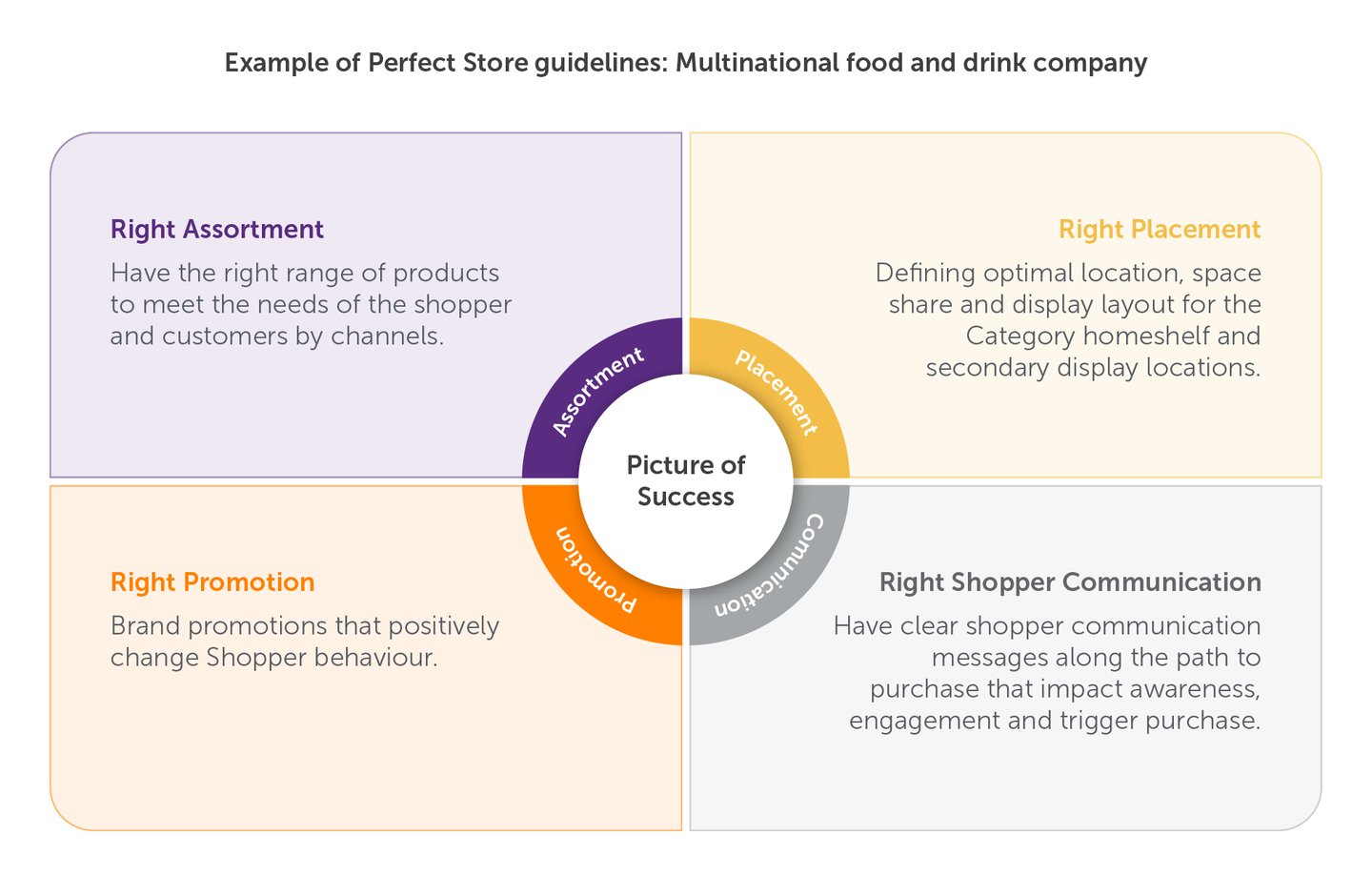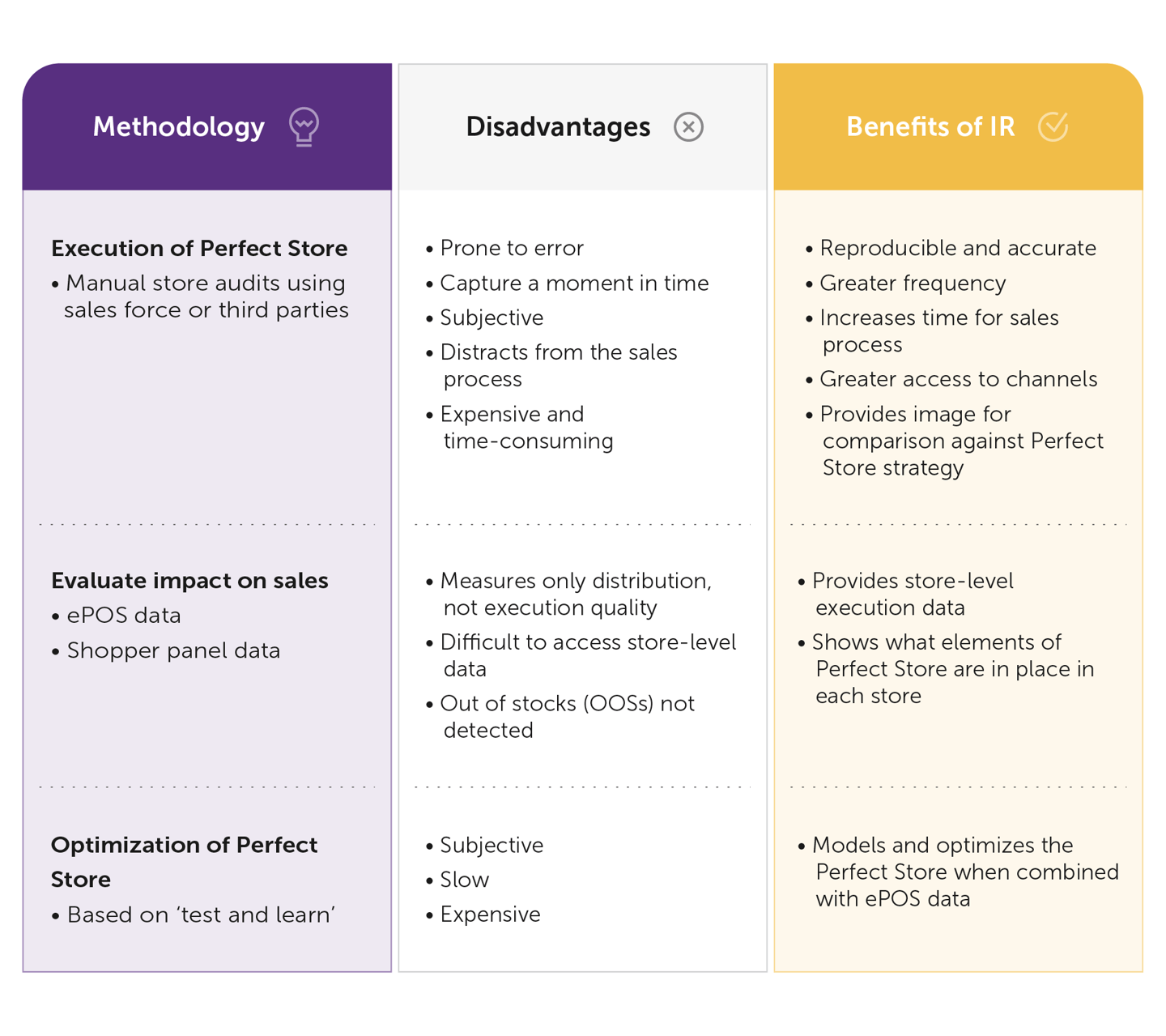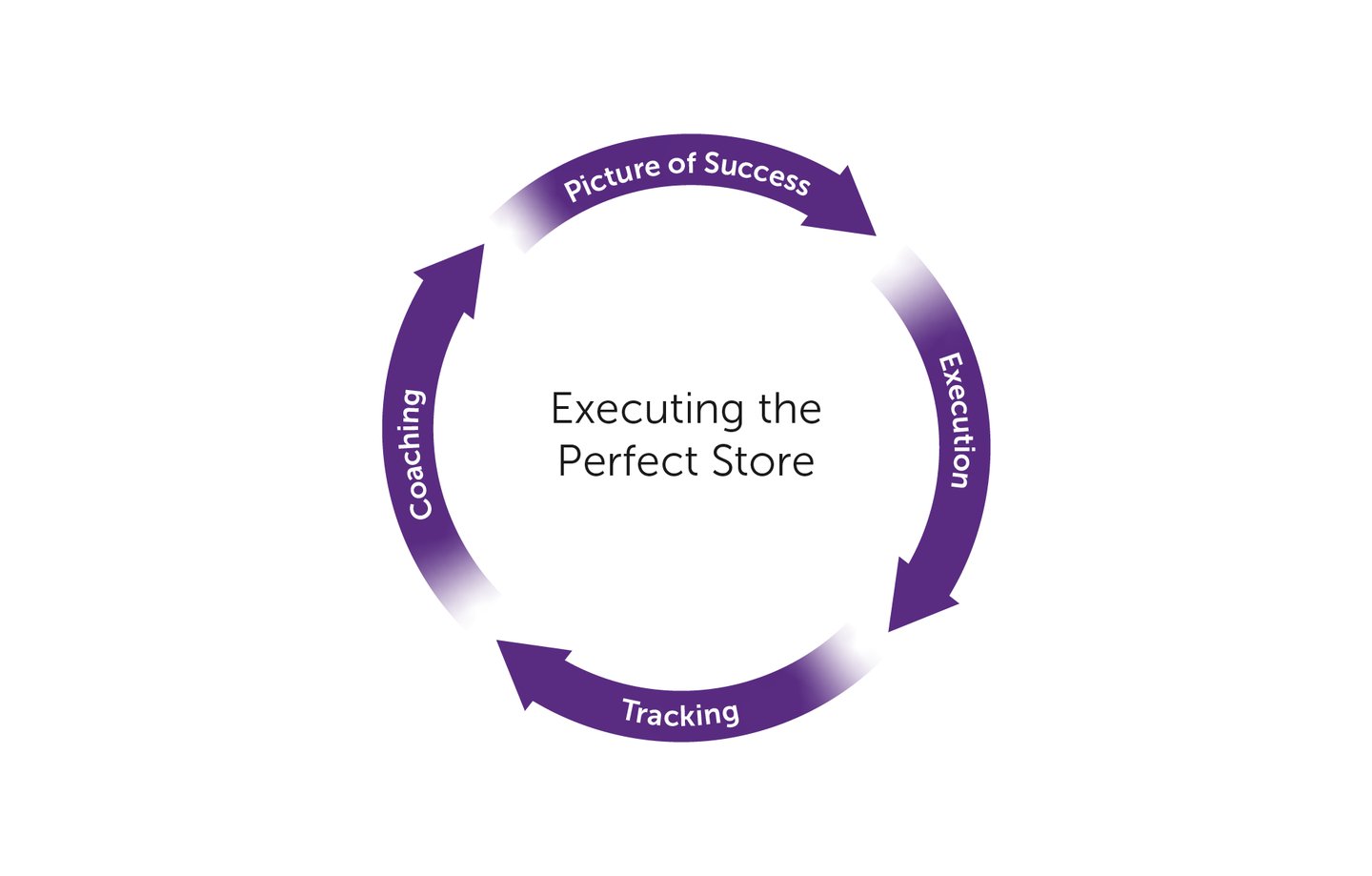
Building and Measuring Your Perfect Store Strategy
A leading consumer packaged goods (CPG) company found that its revenue increased by 13% in stores where it implemented a Perfect Store strategy. In this blog, we outline what a Perfect Store strategy is and how it can work for your business.
What is a Perfect Store?
A Perfect Store is one in which consumers can find the right products in the right location, with products presented in the best possible way to influence buying behavior. To achieve this, CPGs design and execute shelf standards that translate shopper-centric insights into practical, scalable and repeatable in-store-execution guidelines.
This strategy:
- Articulates how product, pack, price, promotion, place and proposition look in each store
- Creates an actionable channel plan to maximize opportunities
- Ensures that the right assortment of products is available and visible to consumers
- Enhances the shopping experience with the appropriate merchandise and brand messages
How do you create a Perfect Store?
The Perfect Store process is co-owned by Category Management, Market Insights/Research and Space Planning teams. Creating the ideal ‘picture of success’ requires a deep knowledge about consumer behavior and makes use of qualitative and quantitative research, POS data, panel, shopper card and manual survey data. When done well, the Perfect Store strategy delivers insights on:
- What SKUs shoppers prefer to purchase
- The prices they expect
- The best location in-store for a product
- The optimal display to meet consumer needs
- What communication consumers need
- How frequently shoppers purchase
The levers of a Perfect Store strategy
Perfect Store guidelines may vary across categories, customers and channels, and it’s not uncommon for CPG companies to have up to 20 distinct sets of guidelines. Broadly speaking, these are the main levers of a Perfect Store strategy that field teams are expected to execute in the right stores:
- Power or core SKUs – Accounting for the highest proportion of existing sales, or those SKUs that are in demand by shoppers, these must always be readily available.
- Brand blocking – Creating brand blocks with multiple facings has visual impact.
- Adjacency – Placing your product alongside complementary products in high-flow locations can maximize potential buyers. For example, a secondary display of packaged pasta in the busy vegetable aisle is a timely reminder for customers of what they need to make dinner tonight.
- Shelving hierarchy – Determining shelf space based on sales performance ensures that there are no out of stocks (OOSs) of high-demand products, and core SKUs are at hand’s reach.
- On-shelf availability (OSA) – Having the right product on the right shelf at the right time is crucial to ensuring consumers are not disappointed when they want to purchase.
Executing the Perfect Store
Implementing a Perfect Store strategy is expected to bring a wide range of benefits including:
- Improved presence and execution in-store
- Development of category and market
- Sales growth
- Increased market share
- Enhanced channel profitability
- Increased customer engagement with the brand
However, monitoring whether the picture of success is executed correctly currently involves a manual process with limited survey questions. Managers at the head office are left to rely either on sales data or field teams self-reporting on execution. This not only limits their ability to measure execution effectively but also to fully measure the impact of program non-compliance over time.
Improving compliance at outlet level
The good news is that you can overcome the limitations of these traditional approaches by using image-recognition (IR) technology (see table below). IR captures images of retail shelves and provides real-time insights into what is happening on every aisle in every store. By seeing what is actually happening on the shelves, you can monitor what elements of your Perfect Store strategy are in place and measure how effective they are.
Perfect Store execution: Traditional versus Image Recognition
With eyes in the store and access to trustworthy, reliable store and SKU-level data at the shopper moment of truth, CPGs can develop a tighter framework to improve the success of Perfect Store programs.
Example of a Perfect Store execution framework
- Building the Picture of Success – Defining the ideal look of your brand across each segment
- Executing – Making sure the field sales team correctly executes strategic priorities
- Tracking – Monitoring the quality of execution and impact on sales
- Coaching – Providing feedback to help improve execution and in-store decision-making
Watch this webinar to learn how Trax can help you improve brand and category performance while increasing store sales and margins.





